I know how disappointing it feels when you order an expensive beer that doesn’t match your meal.
You want a drink that amplifies the flavors and leaves you refreshed and satisfied. But instead you get a beer that tastes nothing like your meal and makes you feel bloated.
Well, I’m here to make sure you don’t make that mistake twice. Read on as I discuss the principles of choosing the perfect beer for your meal.
Understanding Your Beer Profile
First, you need to understand the qualities that make each beer unique. Here’s an overview of what to look for.
Flavor and Texture
Flavor is the number one feature that determines which beer goes with your meal. If the flavors don’t match, other factors won’t matter much. These are the most common beer flavors:
- Spicy
- Sweet
- Nutty
- Carbonated
- Creamy
- Crisp
- Clean
- Tart
- Sour
- Fruity
Hoppiness

The hop is a green flower with the shape of a pinecone that gives beer its distinct bitter taste. You can find tens of hop varieties with different tastes and aromas. The beer’s flavor depends on the hop variety and when it enters the mixture.
If it’s added to the wort at the beginning, it gives a bitter taste to the beer. But the later the hop is added, the lower the bitterness and the higher the aromas. That’s because boiling will evaporate the aromatic oils in the plant.
For example, Simcoe adds an earthy, fruity flavor like passion fruit and berries. But Summit is more bitter and intense. On a side note, hops prevent bacterial growth. So, beers with more hops usually have a longer shelf-life.
Bitterness
Besides hops, the main factor that makes beer bitter is alpha acids. Other factors that affect bitterness include:
- Water
- Yeast
- Brewing process
- Spices
Experts use a universal system called IBU (International Bitterness Unit) to measure the beer’s bitterness.
The serving temperature and the beer’s fizziness also affect how bitter it tastes. But that’s not usually measurable bitterness. It’s the perceived bitterness that may not be the same for everyone.
Malt
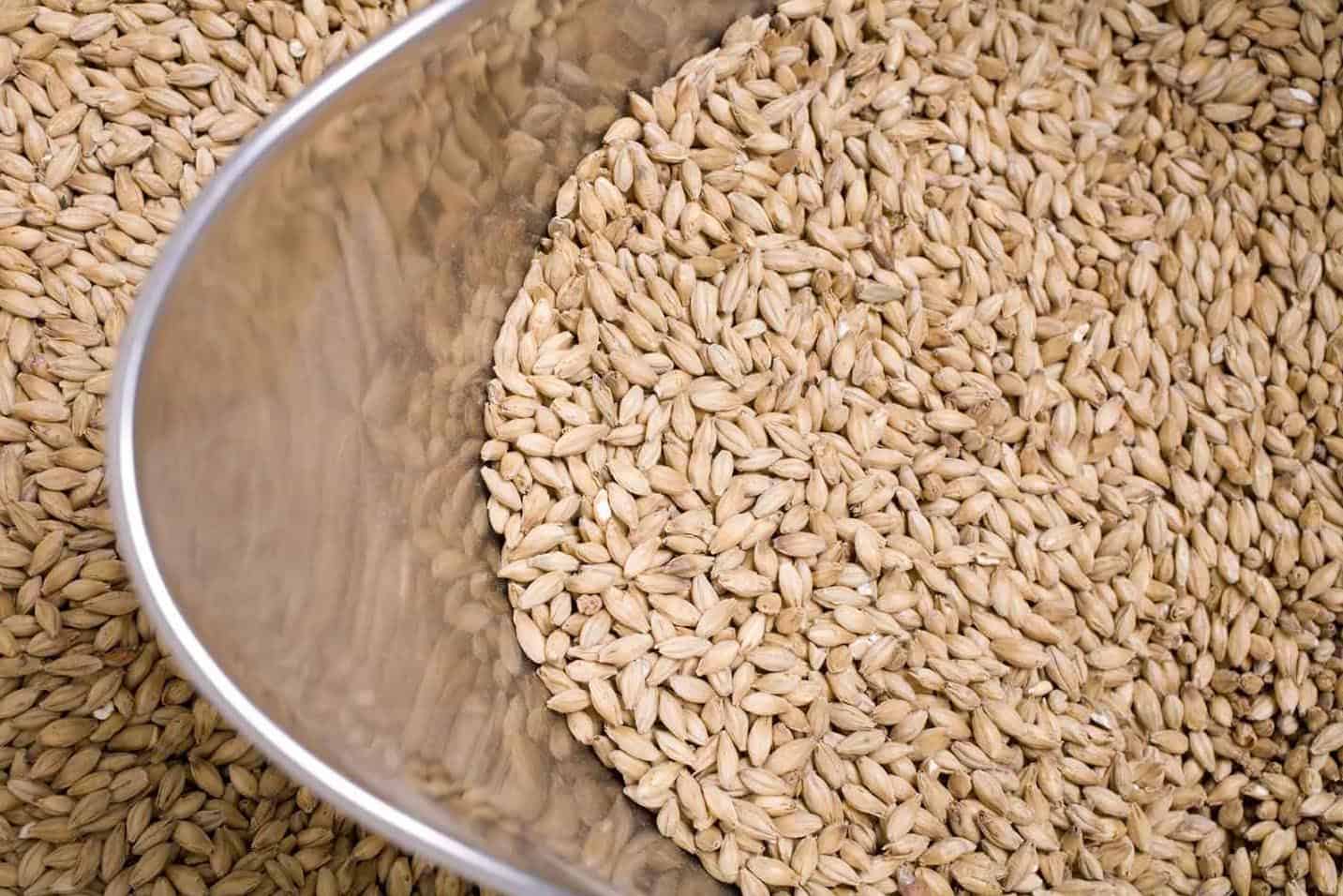
Malt is barley grains soaked in water to prepare for germination. It goes through hot air or roasting to stop germination. This roasting adds a nutty flavor to the beer. If the roasting degree is high, it makes the beer more bitter.
Malt also gives the beer a sweet flavor. The roasting process caramelizes the sugars in barley and adds to the sweetness.
Plus, malt adds to the tannin content of the beer through polyphenols in the grain’s husk. Tannin is the substance that makes the beer taste dry.
Color and Appearance
Closely related to flavor and texture is the beer’s color. Generally, the darker the beer, the more intense and bitter it tastes. That’s because darker beers go through a longer roasting process.
On the other hand, lighter beers are crisp and soft. But you can’t simply look at the beer’s color and guess its taste. For example, some brewers add spices, coffee, caramel, and fruit extracts for a specific flavor.
Here’s a useful video outlining the difference between light and dark beers:
Aroma
Aroma and taste go hand in hand. When you taste beer, you can’t ignore the aroma that runs through your nose. This will hugely affect your choice of food pairing. But brewers may add many ingredients that change the beer’s final aroma. This makes pairing difficult.
So, you should consider the main factors that affect beer’s aroma. They include hop variety, yeast strain, and grain.
Alcohol Content
When pairing food with beer, consider its ABV (alcohol by volume) percentage. Higher alcohol contents are more difficult to pair with food. Alcohol can affect your smell and taste senses.
So, it can determine the food you can eat with your beer. For example, spicy foods are an absolute no-no with high-alcohol beers.
What’s Your Food Pairing Goal?
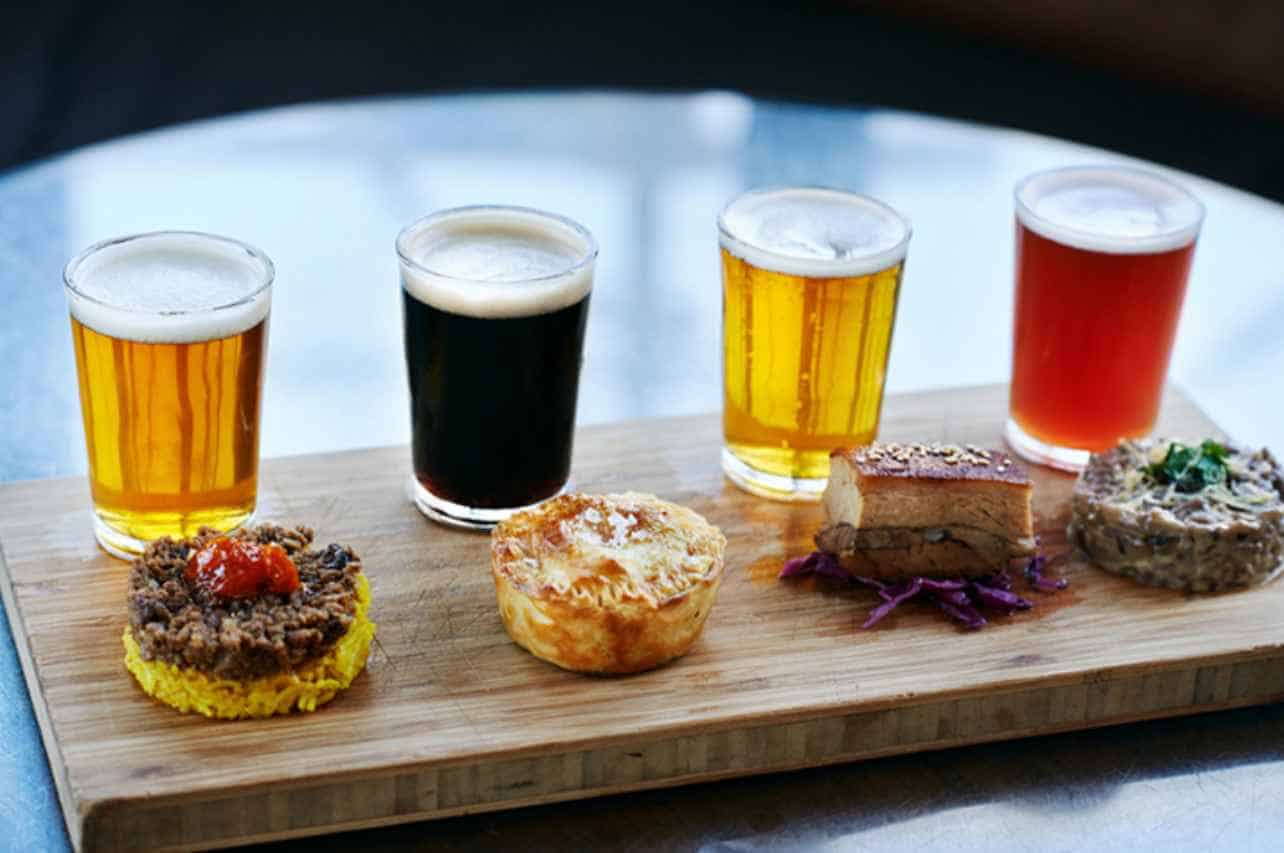
After understanding your beer profile, decide what you want to achieve with food pairings. The food that you eat with your beer can serve three purposes:
- Complement. It’s the easiest method. You determine your beer’s flavor and pair it with foods with similar tastes. For example, rich foods pair with intense flavors, and light beers match lighter fare. So, you can complement your grilled barbecue ribs with a chocolatey and caramel-y porter.
- Contrast. Some people prefer contrasting flavors as they balance each other. If you think drinking an intense beer with a hearty meal is overwhelming, you can reduce the beer’s intensity by pairing it with a lighter meal. Thus, sweet foods go with bitter or sour beer, and crisp beers match creamier dishes.
- Cleanse. Imagine biting through a spicy Indian steak. It’s so hot that it numbs all your taste buds. So, you need something to cleanse your palate and balance out the tastes. That’s the aim of cleansing. It’s similar to contrasting as it washes away flavors with different profiles. But it’s more extreme since it should cut through the tastes.
You can use any of these methods based on your preferences. But remember to choose flavors that don’t overpower each other. This will happen when contrasting tastes and textures. You want to balance them out, but the stronger tastes kill the milder tones.
Beer and Food Pairing for Different Beer Styles
The factors that affect beer-food pairing can be overwhelming. And you may have difficulty finding the perfect matches. So, I’ve prepared this list to help you narrow down your options.
Light Beers

Light beers have a light color and weight. They’re crisp and refreshing but not bitter or hoppy. So, you can pair them with any food. But they’re best with spicy food. You can pair them with:
- Spring rolls
- Buffalo wings
- Hot dogs
- Noodles
- Chicken
Amber Beers

Red and amber beers have a stronger mouthfeel than light beers. They’re dry and crisp with strong malt and sweet caramel notes. They pair perfectly with savory and rich dishes. They’re also ideal for cleansing the palate. You can pair them with:
- Spicy Chicken
- Seafood
- Brisket
- Pizza
- Hamburger
- Candied nuts
- Buffalo wings
- Light soups
Brown Ales
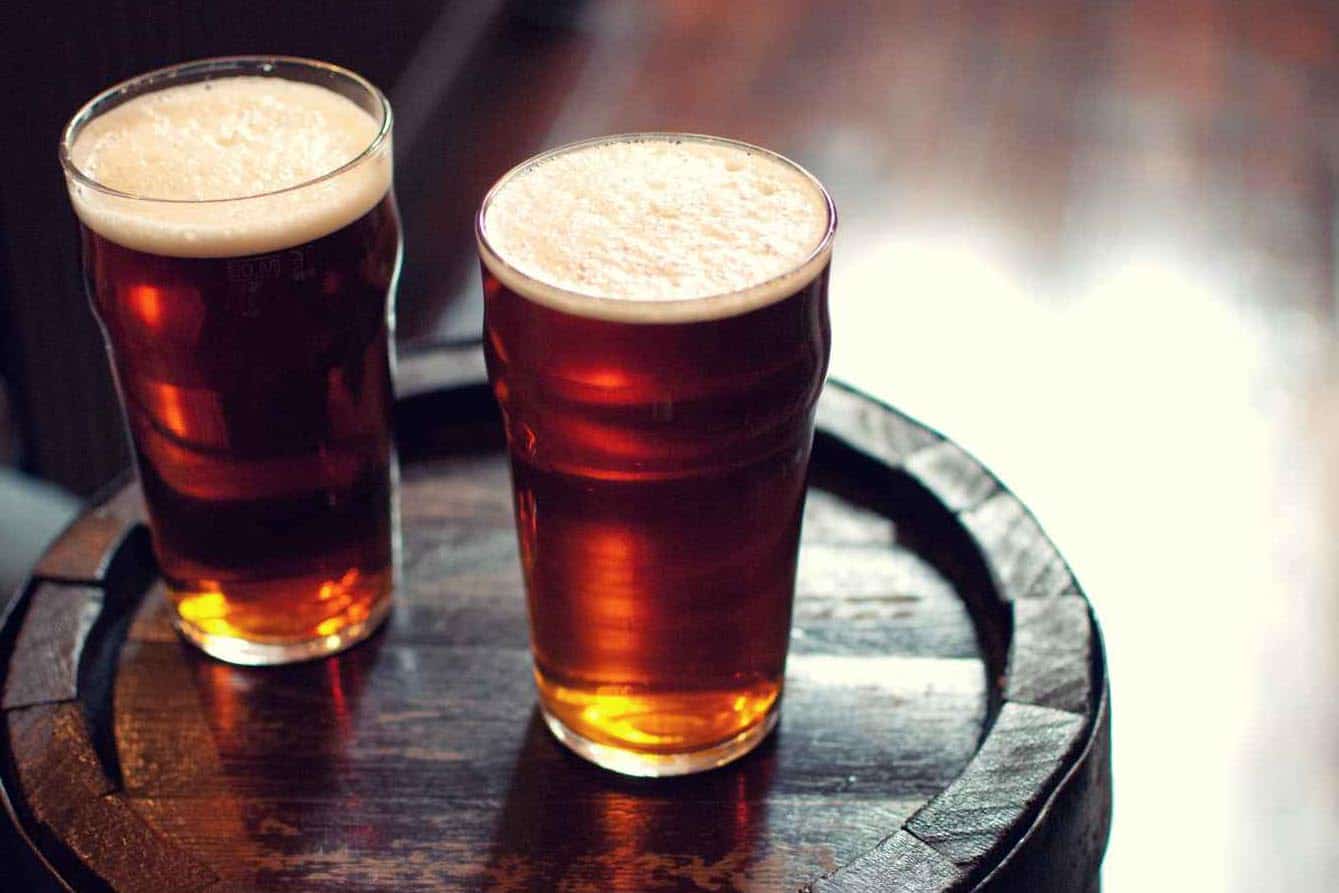
Brown ales may look like they have strong hoppy flavors. But their dark color mostly comes from the strong coffee and chocolate flavors. Their roast and nutty flavors make them perfect for hearty dishes like:
- Pork
- Grilled salmon
- Smoked sausages
- Sushi
Dark Lagers
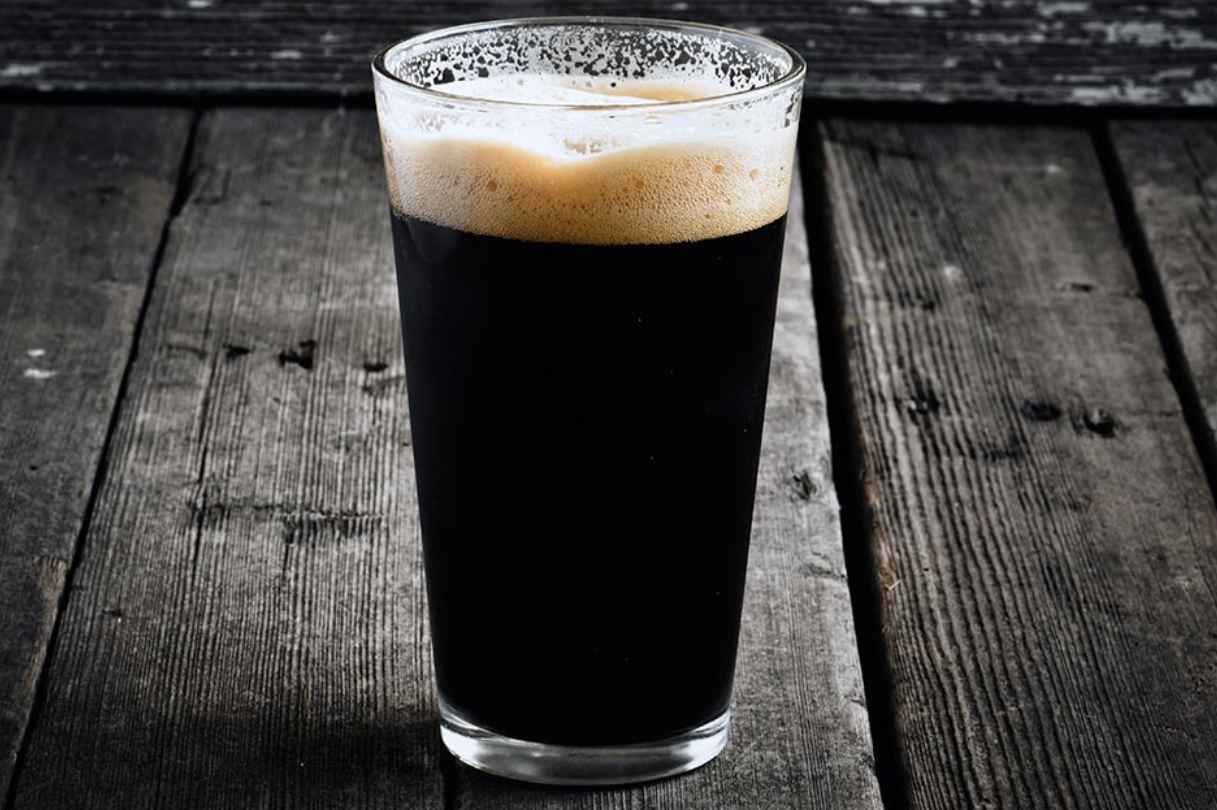
Dark lagers look like porters or stouts. But they only have a dark color. They’re brewed with lager yeast and dark, roasted malt. So, they’re refreshing and vibrant, with a toasty, nutty flavor. Plus, they may have a hint of sweetness if they contain caramel syrup. They pair well with hearty and spicy dishes, including:
- Smoked meat
- Grilled meat
- Sausages
- Burgers
- Pizza
Wheat Beers
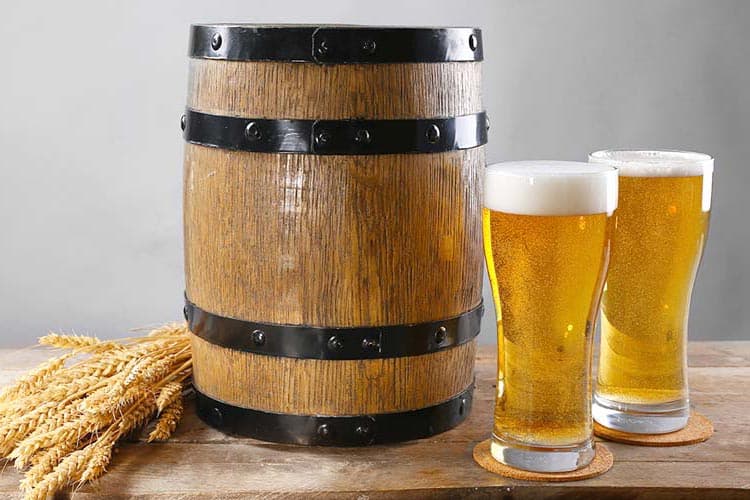
This flavor-pack beer has bready notes thanks to wheat. It’s light-bodied and agreeable. If the manufacturer wants more flavor, they add citrus or banana flavors to the beer. Since they’re agreeable, they pair with many different dishes, including:
- Spicy food
- Fruity desserts
- Salads
- Sushi
- Vegetable dishes
- Seafood
- Smoked meat
India Pale Ales

IPAs are palate cleansers. They’re bitter with citrus or herbal tones. So, they bring out the food’s flavors. Thanks to their hoppy flavor, they pair with spicy, fatty, and salty foods. They include:
- Cambozola cheese
- Caramel apple tart
- Curry
- Tacos
- Salmon
- Burgers
- Steak
- Fajitas
- French fries
Stouts
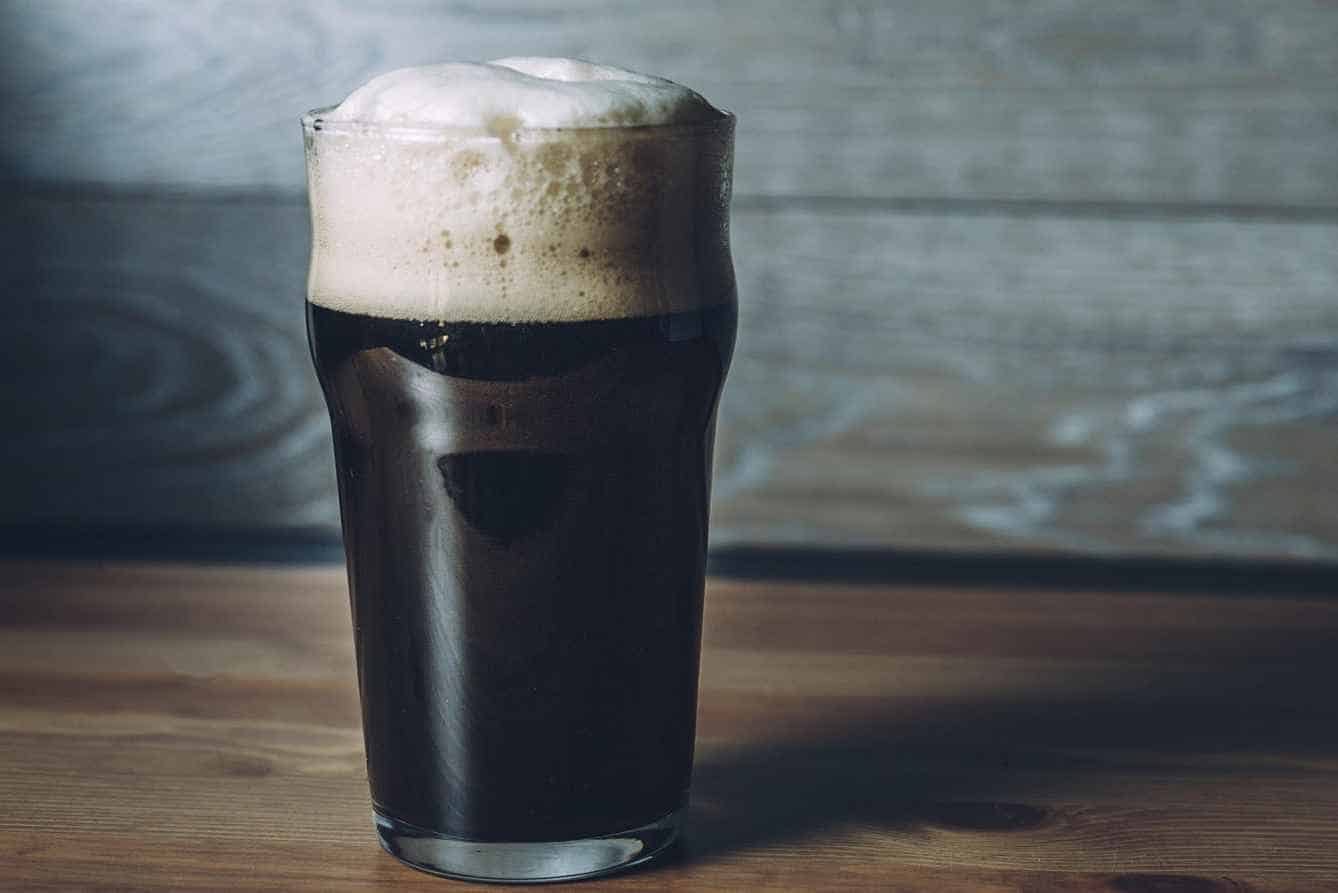
These flavor-packed, chocolatey, rich beers have a creamy but smooth mouthfeel. Their dark color comes from heavily roasted grains. But they’re not all bitter and high in alcohol content. The malty, chocolatey flavor makes it a perfect match with steaks. But you can also bring out flavors with:
- Ice cream
- Oysters
- Bar nuts
- French fries
- Fried Calamari
- Chocolate mousse
- Mild blue cheese like Stilton
Porters
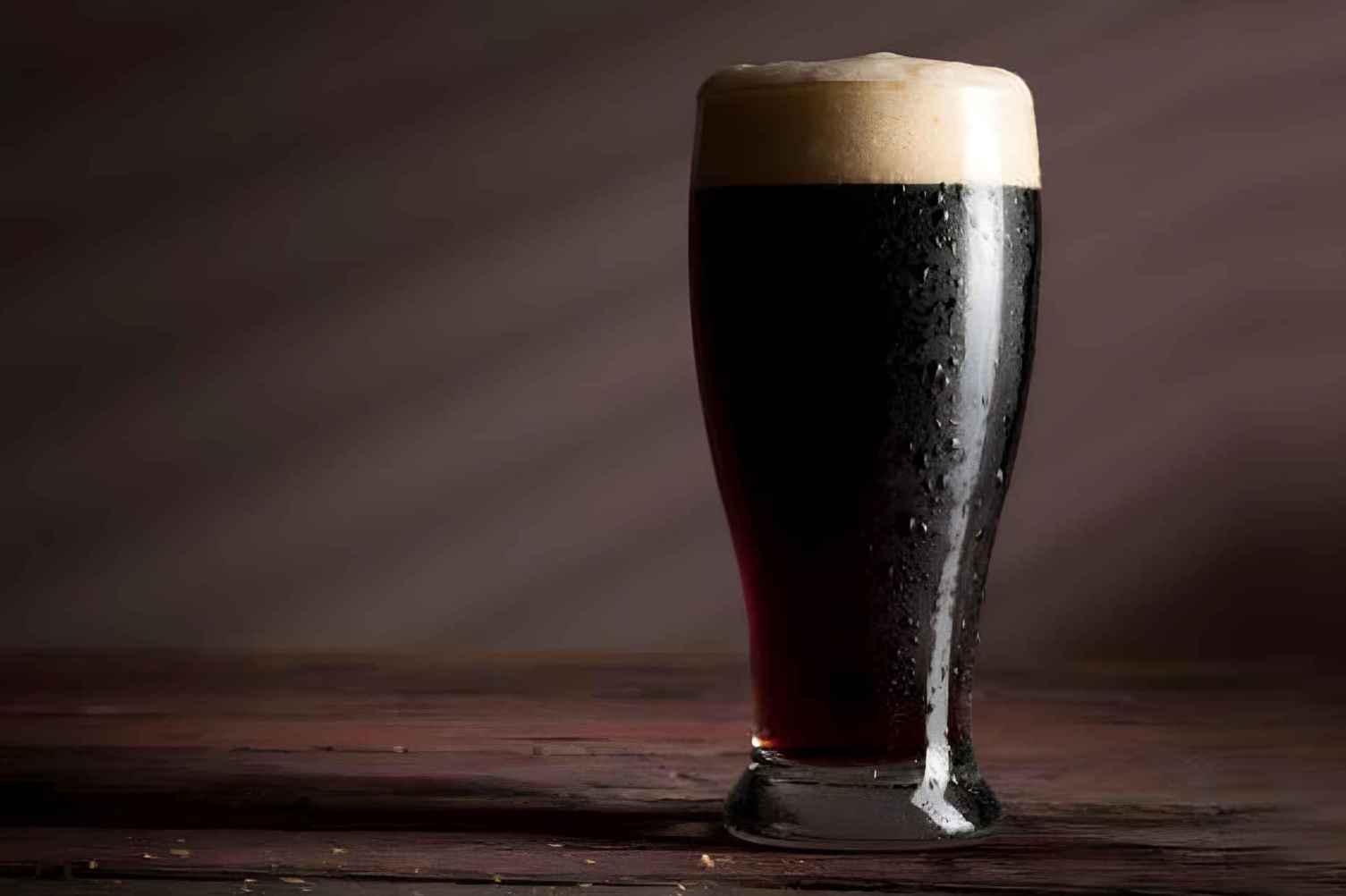
Like stouts, porters are strong, malty, and dark. But stouts are stronger. Porters are lighter and have a lower ABV. The complex and flavorful nature of porters makes them perfect for rich foods like:
- Blackened fish
- Barbecue
- Roasted meat
- Lobster
- Tilsit
- Gruyère
- Chocolate cookies with peanut butter
Beer Pairing with Different Types of Cuisine
Another principle that helps you in pairing beer is the specific cuisine. Each cuisine has signature qualities and ingredients that shine through with the right beer. Here’s a rundown of the most popular cuisine:
Mexican
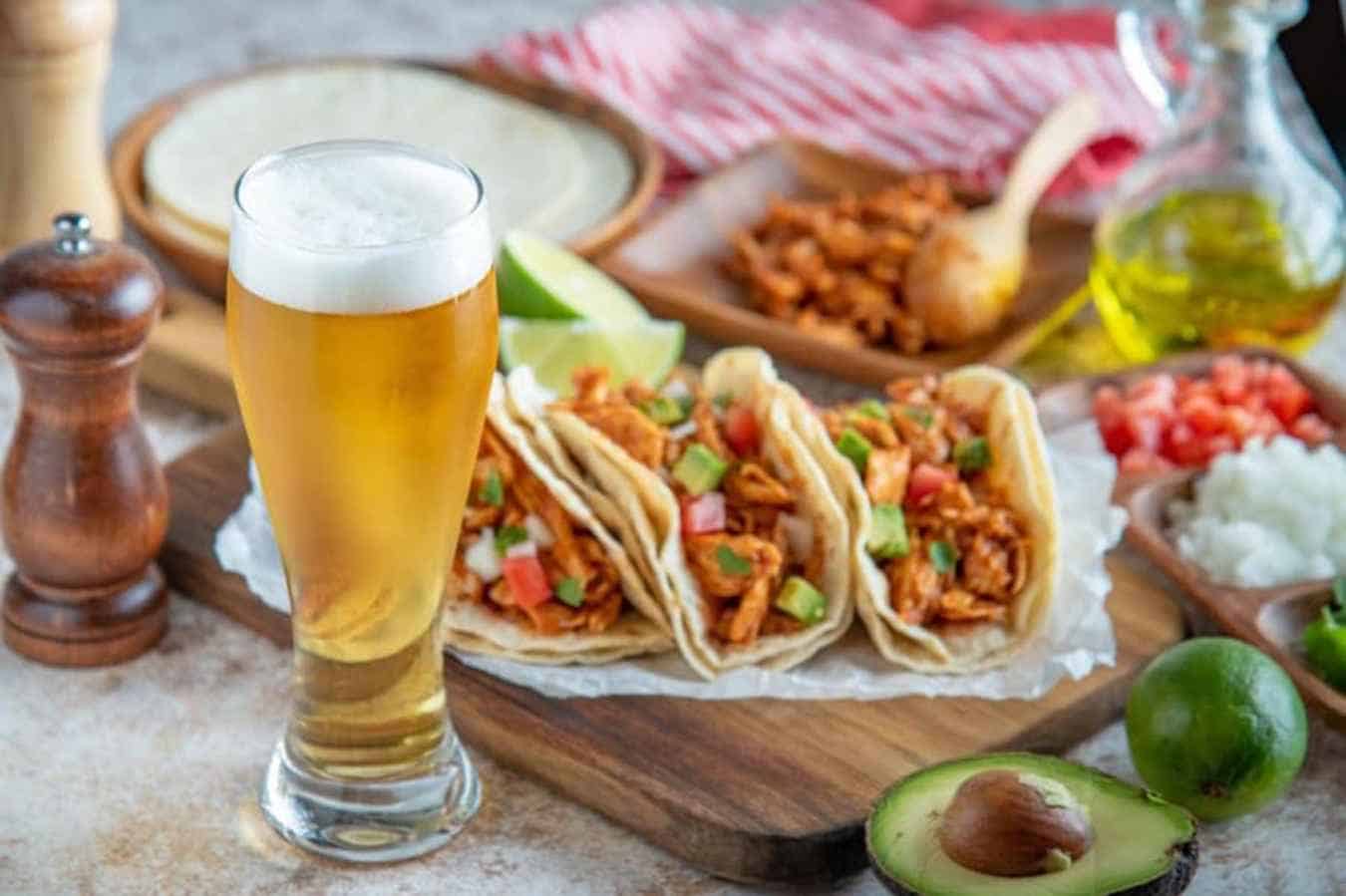
Mexican cuisine is versatile and with various taste profiles.
Spicy dishes go perfectly with light-bodied beers. You don’t want to intensify the spicy flavor with high alcohol or bitterness. Malty beers and American Blond ale are perfect matches for Mexican spicy foods.
Mexican cuisine also has creamy and rich dishes. Pair your creamy and cheesy enchiladas and burritos with full-bodied beers to balance the richness of the dishes.
Finally, hearty dishes like braised meat call for beers with caramel or chocolate flavors. Dark lagers and brown ales go perfectly with these types.
Italian
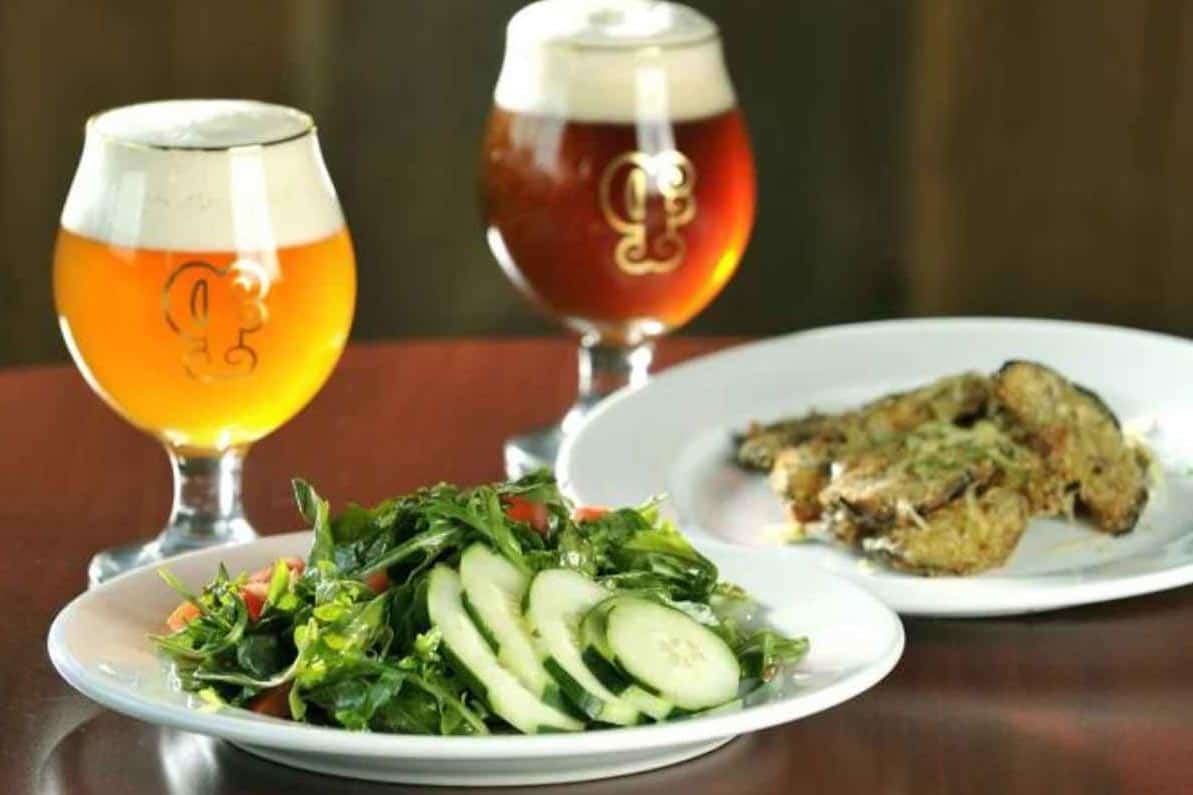
When you think of Italian cuisine, pizza is the first thing that comes up. And it makes a perfect beer companion.
Your choice of beer depends on the topping and ingredients. For example, pepperoni pizzas blend well with crispy IPAs. On the other hand, Marguerita has a delicate flavor that calls for a light beer. Pilsner is a great candidate here.
Pasta is another classic Italian dish traditionally paired with wine. But there’s no rule against pairing it with beer. Depending on the sauce, you can drink different beers with your pasta.
- Pilsner to contrast with the heavy, creamy texture.
- Amber ales with citrusy flavors complement the acidic tomato.
- Pale ales contain herbal tones that complement pesto’s herbs.
In general, you shouldn’t pair rich and strong beers with pasta and pizza. These dishes can be heavy on your stomach. And the strong beer can make it even worse.
Chinese
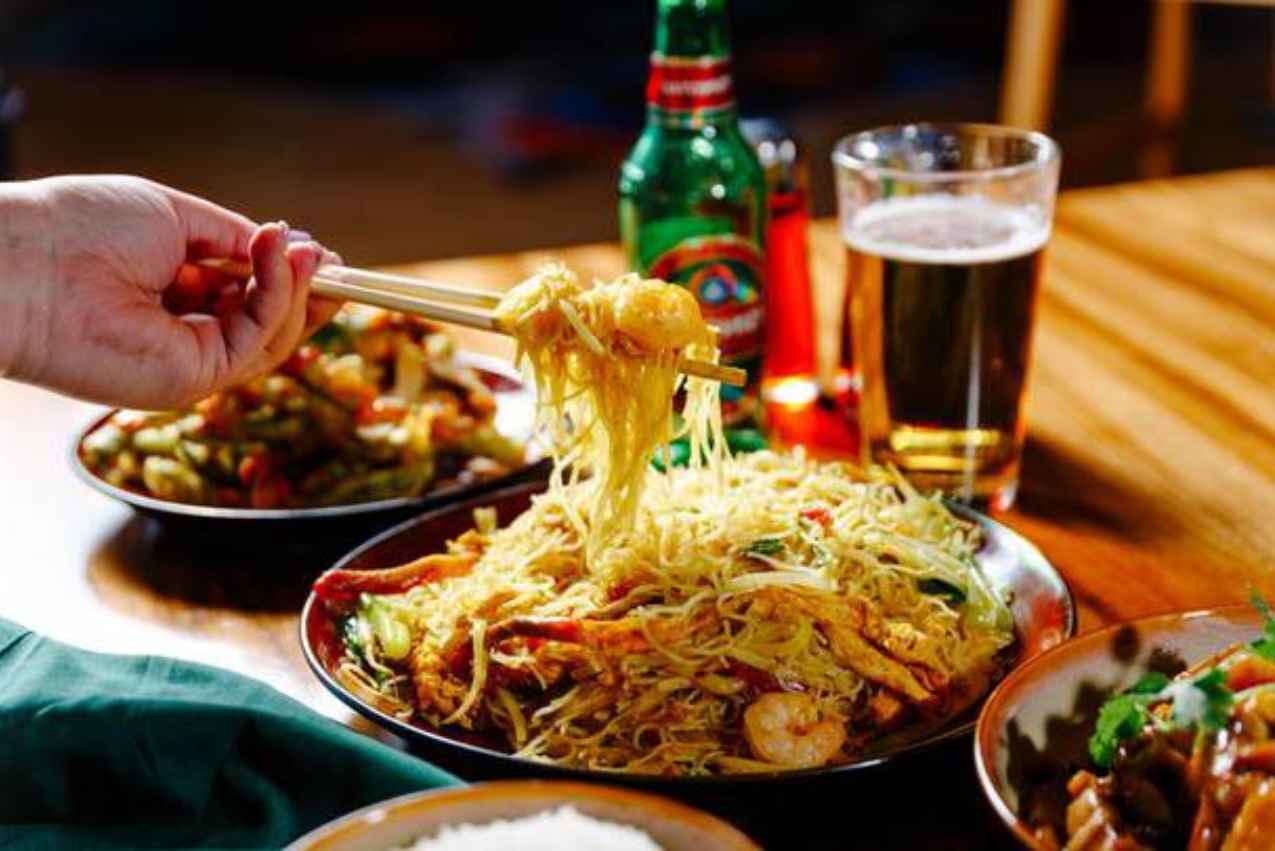
Asian-style food, including Chinese, has a zing that comes from spices. So, you need a crisp and light beer to balance them out. These beers are the best pairings:
- Saison
- IPA
- White ale
- Red ale
- Wheat beer
- Pilsner
- American amber ale
Beer and Cheese

Cheese is the classic companion for wine, but it pairs with beer, too. Cheese and beer are both complex. So, they open up many pairing opportunities. They bring out each other’s undertones.
The main feature that makes it a match made in heaven is carbonation. Cheese is rich and dense. And carbonated beer cuts through to balance it out.
Their bitterness complements or contrasts with the cheese’s creaminess, saltiness, and complex character.
Since cheese and beer are both complex, it’s easy for one to overpower the other. So, consider the following:
- Pair light cheese with light beer.
- Pair ripe cheese with strong beer.
This way, one taste doesn’t stifle the other. For example, aged cheddar with an intense, sharp, and creamy texture perfectly matches a stout.
Based on these principles, here are some beer-cheese pairing suggestions:
| Cheese | Beer |
| Feta Cheese | Belgian Blonde |
| Pepper Jack | Stout / Porter |
| Blue Cheese | IPA/Porter |
| Parmesan | IPA |
| Cheddar | Pale Ale/ Irish Red |
| Camembert | Pilsner |
Beer and Dessert
Another great option for beer pairing is desserts. The rich, fruity flavors of desserts make them ideal with the fruity notes of beer. In other cases, they can balance out each other’s tastes. The bitterness of beer cuts through the sweet and creamy texture of desserts.
When pairing beer and dessert, consider the beer first. Then, decide what dessert matches it. Also, go for stronger beers than the dessert to stand up to its intense flavors and texture.
Stouts and porters are the best options here. And if your beer is fruity, like wheat beers, go with fruity desserts.
Here are a few suggestions:
| Beer | Dessert |
| Blonde Ale | Lemon Custard Tart, Light Fruity Cakes |
| Pale Ale | Carrot Cake |
| India Pale Ale | Caramel Apple Tart, Ginger Chocolate Truffle |
| Amber Ale | Poached Pears, Pound Cake |
| Porter | Chocolate Cake, Chocolate Pot De Crème |
Tips and Tricks for Successful Beer and Food Pairing
Besides all the details in this article, you can consider the following tips for an easier pairing:
- If you don’t know what to choose, stick to beer foods, like hamburgers, pizzas, or steaks. You can’t go wrong with them.
- Embrace harmonies to avoid overpowering one flavor.
- Experiment with different combinations to find your perfect match.
- Consider all qualities, including sweetness, carbonation, bitterness, richness, and spices.
Finally, trust your gut and taste buds! If a combination works, stick to it!
Go With Your Buds!
Pairing beer with food is intuitive. The choice ultimately comes down to what your palate finds pleasing.
You can consider the three C’s of pairing to narrow your options. And look for beers that bring out the flavors in your food instead of stifling them.


Sybil R Higgins graduated from the University of Chicago with an English major. Since joining Unknown Brewing, she’s taken up homebrewing. She’s still an amateur, sticking to extract recipes and brewing light pilsners. But she’s a better beer consumer.
